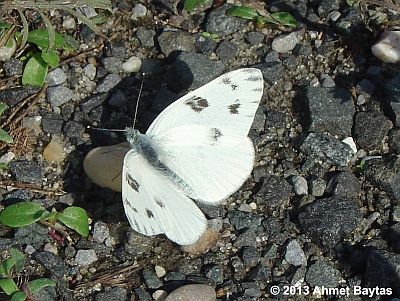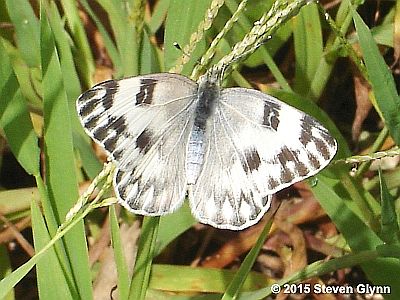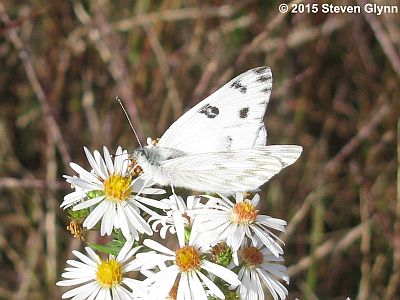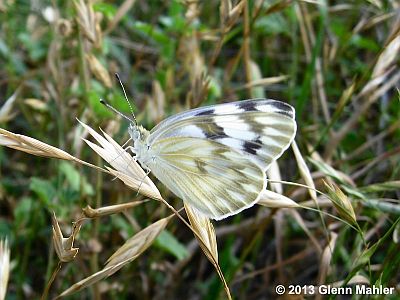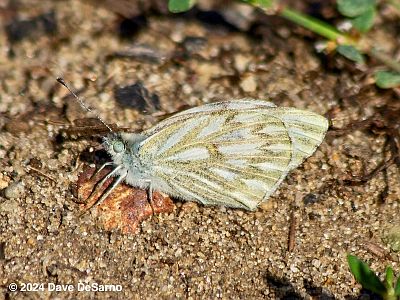New Jersey Butterfly Club
A chapter of the North American Butterfly Association (NABA)
Checkered White
Pontia protodice
Identification: Small—1.6" (similar to the very familiar Cabbage White). Unlike Cabbage White, occasionally seen with wings open. Above: Male FW mostly white with black and gray spots; HW almost entirely white. Females are much more heavily marked, with extensive black markings on FW and gray markings on HW. Below: Male FW white with several black spots; HW almost entirely white. Female with gray markings on FW below, and extensive, angular, yellow-brown to yellow-green markings on HW below.
NJ Status and Distribution: Irregular resident in southern NJ. Classified as Threatened in NJ, Checkered White is primarily a southern and western species that reaches the northern limit of its range in southern New York. Reported most years in Salem County, and occasionally at Sandy Hook GNRA, Monmouth County. Elsewhere, occurrences are very sporadic.
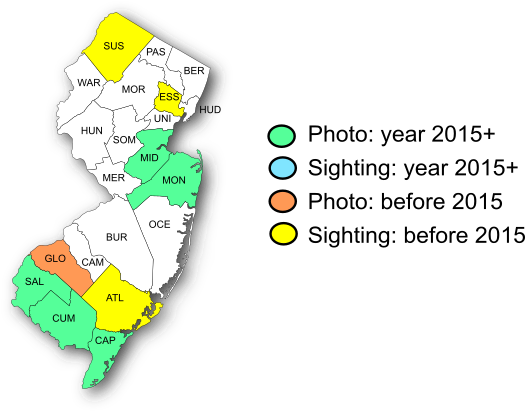
Habitat: Open, often dry and disturbed.
Flight Period: Spring through fall though most reports are from late summer and early fall. Extreme dates: North Jersey: 4/16-11/3; South Jersey 6/4-11/10.
Caterpillar Food Plants: Peppergrass (Lepidium campestris and L. virginicum) and possibly other species in the Mustard Family. Both of these species are common and widespread in NJ so Checkered White is not host-plant-limited.
Overwintering Stage: Pupa.
Good Locations: Sandy Hook GNRA (primarily in September), and Salem WMA, Salem County. It’s best to check the Northern NJ Recent Sightings and the South Jersey Butterfly Log for any current information.
Comments: Checkered Whites may be residents (meaning that at least some pupae survive milder winters with adults emerging in the spring) in the southern counties, but the few that appear at Sandy Hook and elsewhere in late summer and fall are probably strays from the south. However, there are a few spring reports from Sandy Hook and the Raritan Bay area, which may represent residents.
